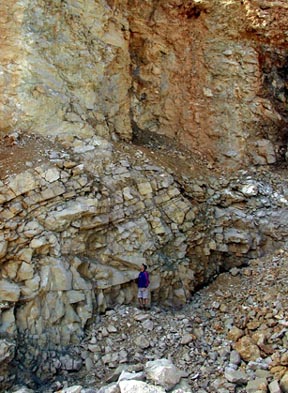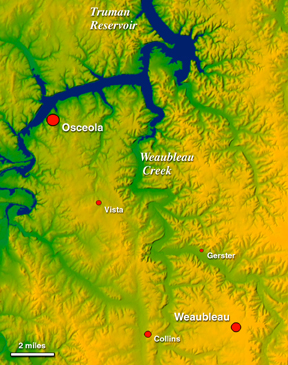
Geotimes Home | AGI Home | Information Services | Geoscience Education | Public Policy | Programs | Publications | Careers

 Combining
a good bit of geologic sleuthing with a fortunate twist, Kevin Evans and colleagues
at Southwest Missouri State University (SMSU) have uncovered what may be the fifth-largest
impact structure in the United States.
Combining
a good bit of geologic sleuthing with a fortunate twist, Kevin Evans and colleagues
at Southwest Missouri State University (SMSU) have uncovered what may be the fifth-largest
impact structure in the United States. Although the shape
of the 19-kilometer-diameter structure is intriguing, some of the most telling
clues are from shocked minerals in the area. Riddled with multiple sets of parallel
fractures and deformation features, these grains could have only resulted from
the intense pressures of two types of events (outside of laboratory experiments):
impacts and nuclear explosions. Charles Rovey, one of the SMSU team members, identified
shocked quartz grains in the breccia that overlies the impact structure, suggesting
that the jumbled rock may be fallout from the impact.
Although the shape
of the 19-kilometer-diameter structure is intriguing, some of the most telling
clues are from shocked minerals in the area. Riddled with multiple sets of parallel
fractures and deformation features, these grains could have only resulted from
the intense pressures of two types of events (outside of laboratory experiments):
impacts and nuclear explosions. Charles Rovey, one of the SMSU team members, identified
shocked quartz grains in the breccia that overlies the impact structure, suggesting
that the jumbled rock may be fallout from the impact. |
Geotimes Home | AGI Home | Information Services | Geoscience Education | Public Policy | Programs | Publications | Careers |